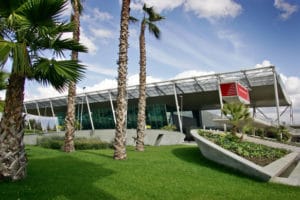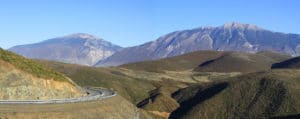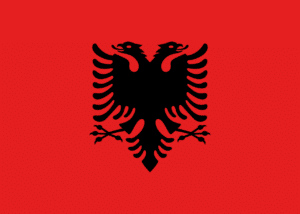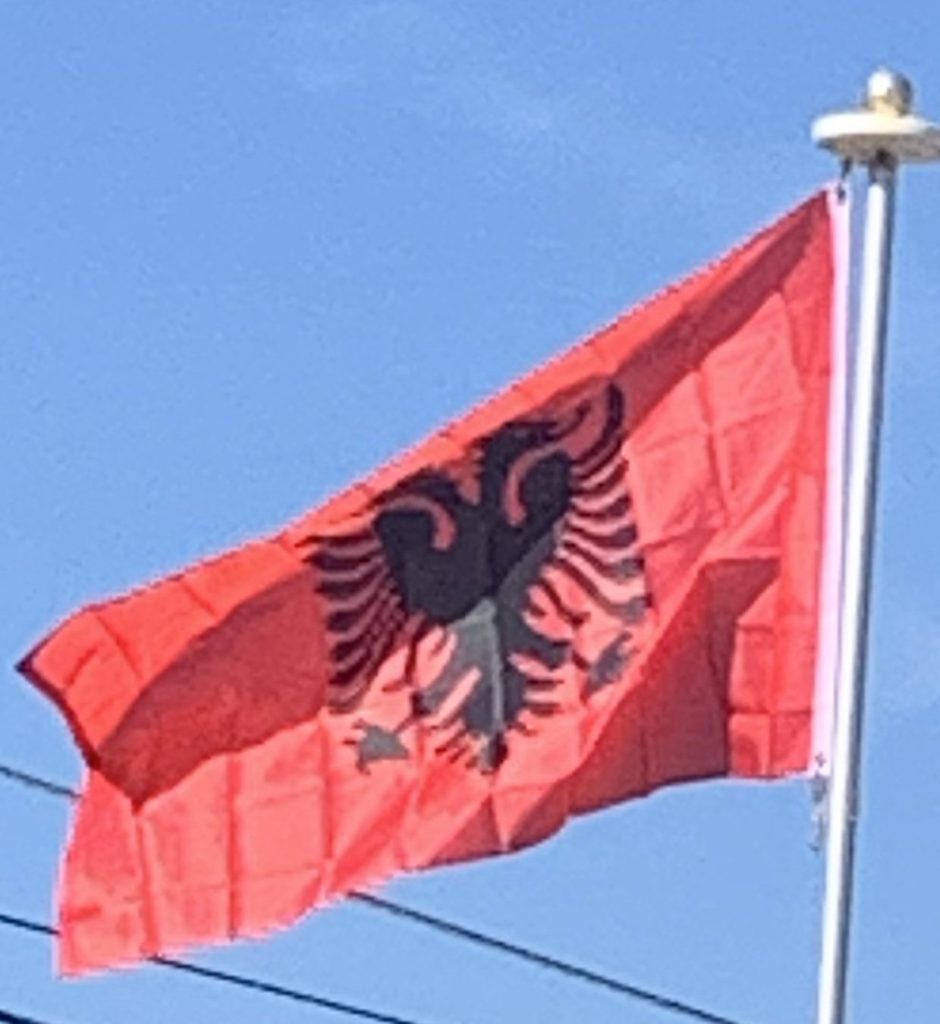
The roads of Albania are well maintained and still under construction. The A1 is the longest motorway of the country and represents a major transportation corridor in Albania. It will prospectively link Durrës on the Adriatic Sea across Pristina in Kosovo with the Pan-European Corridor X in Serbia. The A2 is part of the Adriatic–Ionian Corridor as well as the Pan-European Corridor VIII and connects Fier with Vlorë. The A3 is currently under construction and will connect, after its completion, Tirana and Elbasan with the Pan-European Corridor VIII. When all three corridors are completed, Albania will have an estimated 472 miles of highway linking it with all of its neighboring countries.

Durrës is the busiest and largest seaport in the country followed by Vlorë, Shëngjin and Sarandë. As of 2014, it is as one of the largest passenger ports on the Adriatic Sea with annual passenger volume of approximately 1.5 million. The ports serve a system of ferries connecting numerous islands and coastal cities in Croatia, Greece and Italy.

The rail network is administered by the national railway company Hekurudha Shqiptare which was extensively promoted by the dictator Enver Hoxha. There has been a considerable increase in car ownership and bus usage while rail use decreased since the end of communism. However a new railway line from Tirana and its airport to Durrës is currently planned. The location of this railway, connecting the most populated urban areas in Albania, makes it an important economic development project.
The Flag:
The flag of Albania is a red flag with a silhouetted black double-headed eagle in the center. The red stands for bravery, strength and valor, while the double-headed eagle represents the sovereign state of Albania. The flag was established as the national flag of Albania when the country gained its independence from the Ottoman empire in 1912.
During John Hunyadi’s campaign at Niss in 1443, Skanderberg and a few hundred Albanians defected from the Turkish ranks; for twenty-five years he scored remarkable victories against the Ottomans. He adopted the Byzantine double-headed eagle flag, and his spectacular victories brought him the papal title Athleta Christi. The eagle was used for heraldic purposes in the Middle Ages by a number of noble families in Albania and became the symbol of the Albanians. The Kastrioti’s coat of arms, depicting a black double-headed eagle on a red field, became famous when he led a revolt against the Ottoman Empire resulting in the independence of Albania from 1443 to 1479. This was the flag of the League of Lezhë, which was the first unified Albanian state in the Middle Ages and the oldest Parliament with extant records.

The symbol of the double-headed eagle was re-used by Albanian nationalists during the 18th, 19th and early 20th centuries as a symbol of their campaign for their country’s independence from the Ottoman Empire. On 28 November 1912, the Albanian Declaration of Independence was proclaimed in Vlora and the flag, raised by Ismail Qemali, was adopted as the symbol of the new nation.
